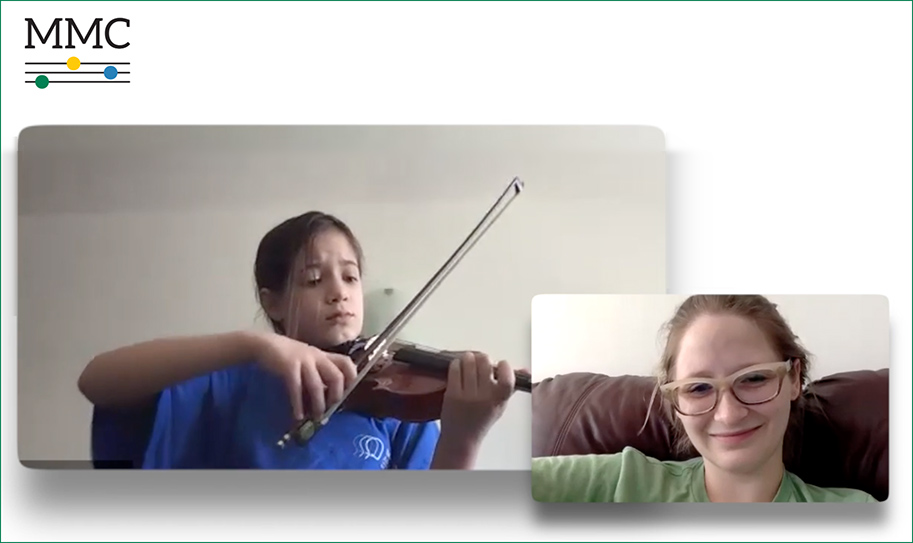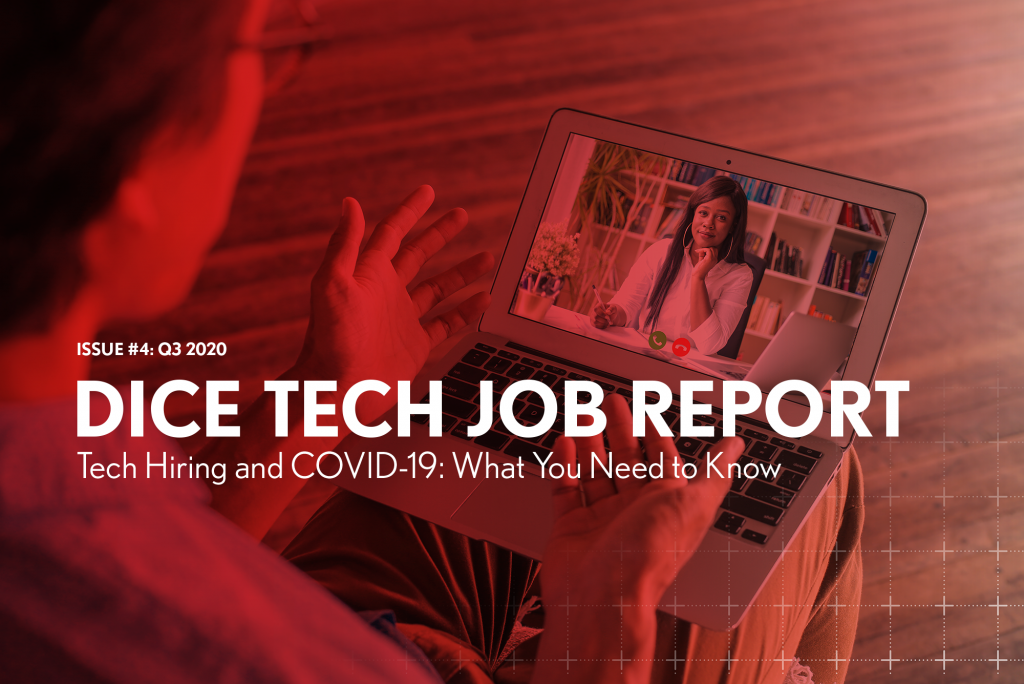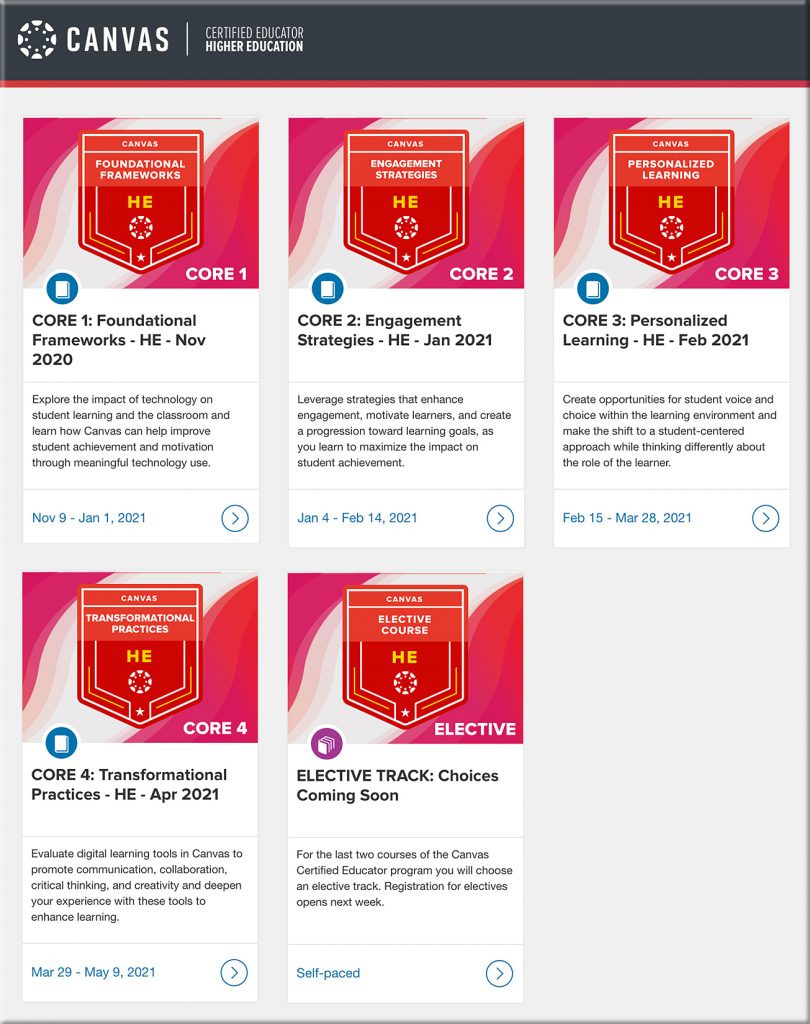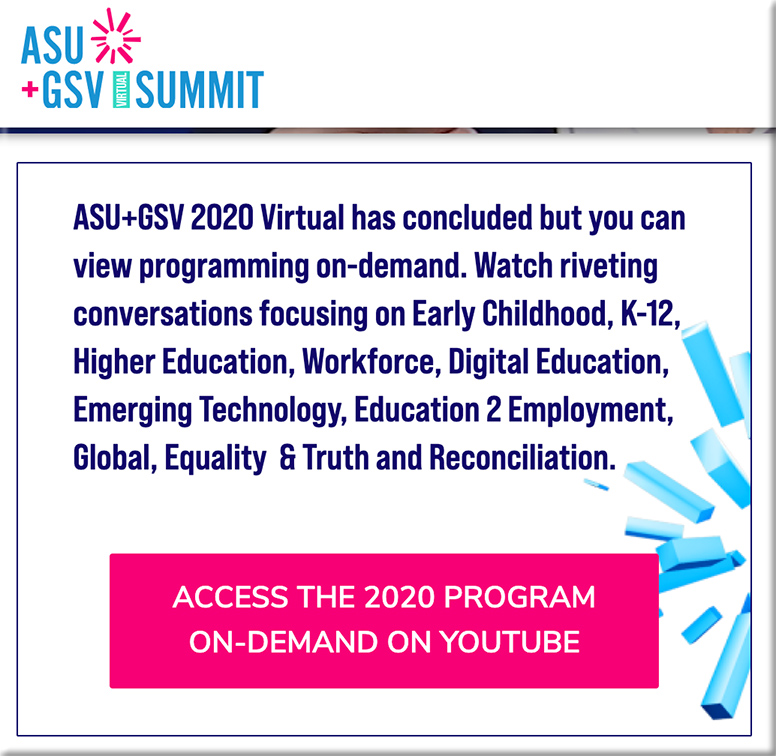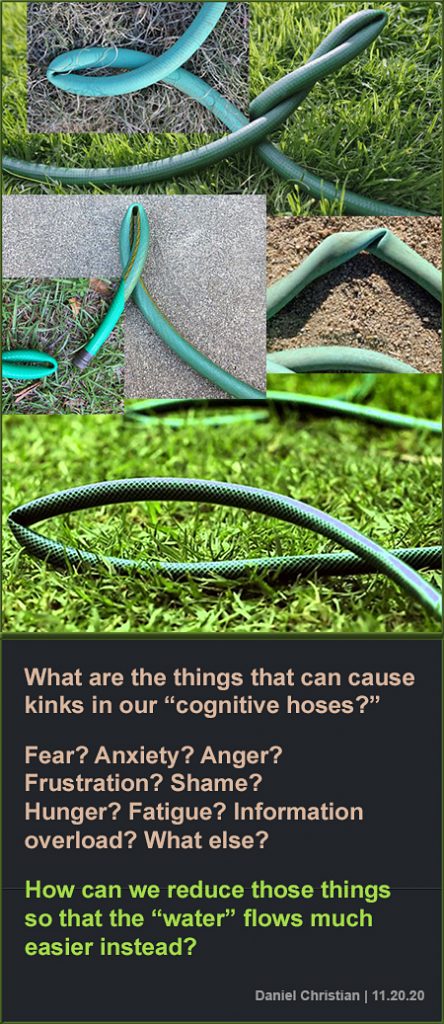
How Can Schools Prepare for VR/AR Integration? https://t.co/X3FhkUPyfZ via @VRScout
— Daniel Christian (he/him/his) (@dchristian5) November 15, 2020
The Non-Traditional Higher Ed Landscape with Amrit Ahluwalia — from trendingineducation.com
Excerpt:
Amrit shares what got him to where he is in his career as we explore why the pandemic may be increasing awareness of the importance of continuing education and the wide array of learners who engage with it. We conclude with Amrit’s perspectives on what’s on the horizon for non-traditional higher education and beyond.
Google “60-year curriculum.”
Also see:
- S1E3 — School in 2025 & The Future of Work — from edcircuit.com
In this episode of Future of School: The Podcast, you’ll hear predictions regarding the outlook for U.S. schools five years from now, the skills required to succeed in the future of work, why K-12 needs to innovate, and more. - How to Take Responsibility for the Future of Education — from gettingsmart.com by Thomas Hatch
Excerpt:
New technologies, artificial intelligence, and many other kinds of innovations can help to improve education. But those technical achievements will not accomplish much without the personal commitments and broader social movements that can transform our communities. If we are truly going to develop collective responsibility in education, then we have to develop collective responsibility for education. We have to hold ourselves, our elected officials, and our communities accountable for making the changes in our society that will end segregation and discrimination, create equitable educational opportunities, and provide the support that everyone needs to thrive.
Musical Mentors collaborative mobilizes and expands in response to pandemic — with thanks to Bristol Jones for this resource/information
Organization connects musicians in need of work with students lacking access to music instruction
(Emphasis below from DSC)
New York, NY — November 12, 2020 — Musical Mentors Collaborative (“MMC”), which provides free private music instruction and instruments to students who would not otherwise have access, announced today its Winter Gala to benefit the 1:1 Music Fund which will enable the organization to provide 10,000 more lessons in the years to come.
MMC was founded in 2009 as a partnership between Columbia University students and PS 145, a neighboring elementary school in Morningside Heights, and incorporated as a 501(c)(3) non-profit in New York State in 2011. Since 2009, MMC’s university chapters have provided over 7,500 lessons to more than 450 students in the United States.
The onset of the COVID-19 pandemic in early 2020 caused dramatic and painful changes in the musical community. Many performing arts institutions were forced to close indefinitely, and many talented musicians found themselves out of work.
In response, MMC launched a teaching fellowship in early April to pay professional musicians to teach one-on-one virtual lessons to students without access to private instruction. Teachers include members of the Metropolitan Opera Orchestra, the New York Philharmonic Orchestra, as well as collaborators of Herbie Hancock, Lauryn Hill, and others. The organization has since onboarded over 35 teaching artists and nearly 200 students. Since the onset of the pandemic, MMC has paid more than $150,000 to its Teaching Fellows and shipped over $30,000 worth of instruments to students, collectively in support of over 1,300 virtual lessons.
“We are inspired by the response from the musical community, and immensely grateful for the support musicians have shown MMC students. These students represent our musical future and would otherwise lack access to the instruction and mentorship they deserve,” said Zack Susel, Co-Founder and Executive Director of MMC. “We are excited to announce our Winter Gala in support of our 1:1 Music Fund, through which we aim to provide 10,000 more private lessons in the coming years.”
In support of its growth and response to the pandemic, MMC has recruited 12 Grandmentors to lead pedagogical development, including GRAMMY® award winning pianist Emmanuel Ax, and Tony® award winning composer Jeanine Tesori, social work experts, and faculty from The Juilliard School and Curtis Institute of Music.
About Musical Mentors Collaborative
Musical Mentors Collaborative connects musicians with underserved students around the country. Since launching in 2009, MMC has taught over 8,800 free private lessons across instruments and genres, furthering their goal to support young musicians through one-on-one instruction. MMC operates chapters at universities across the United States, and mobilizes professional musicians through their selective Teaching Fellowship.
For more information, visit www.musical–mentors.org. | Instagram | Twitter
Also see:
MMC is thrilled to announce our newest campaign, the 1:1 Music Fund, which brings free, one-on-one lessons and instruments to kids who wouldn’t otherwise have access.
To learn more about the campaign and to donate, visit the link: https://t.co/A0eDNwJI3Q#1to1music pic.twitter.com/oc7TJqJFEX
— MMC (@musicalmentors_) November 12, 2020
The Dice Q3 Tech Job Report: Tech Hiring and COVID-19: What You Need to Know — from techhub.dice.com
The report, issued quarterly by Dice, provides
From DSC:
One can quickly see how valuable this information would be as a data feed into an AI-based, next-generation learning platform.
The platform would connect the marketable skills with the courses, websites, blogs, RSS feeds/streams of content, etc. that would help a learner quickly and affordably build such in-demand skills. Given the shortening half-lives of many kinds of information, such a service is needed desperately…especially now with the impact of the Coronavirus.



Also relevant: See how ISTE built its upcoming virtual event!
Temperament-Inclusive Pedagogy: Helping Introverted and Extraverted Students Thrive in a Changing Educational Landscape — from onlinelearningconsortium.org by Mary R. Fry
Excerpt (emphasis DSC):
So how do we take these different approaches to learning into account and foster a classroom environment that is more inclusive of the needs of both extraverts and introverts? Let’s first distinguish between how extraverts and introverts most prefer to learn, and then discuss ways to meet the needs of both. Extraverts tend to learn through active and social engagement with the material (group work, interactive learning experiences, performing and discussing). Verbalizing typically helps extraverts to think through their ideas and to foster new ones. They often think quickly on their feet and welcome working in large groups. It can be challenging for extraverts to generate ideas in isolation (talking through ideas is often needed) and thus working on solitary projects and writing can be challenging.
In contrast, introverts thrive with solitary/independent work and typically need this time to sort through what they are learning before they can formulate their thoughts and articulate their perspectives. Introverted learners often dislike group work (or at least the group sizes and structures that are often used in the classroom (more on this in a moment)) and find their voice drowned out in synchronous discussions as they don’t typically think as fast as their extroverted counterparts and don’t often speak until they feel they have something carefully thought out to share. Introverted learners are often quite content, and can remain attentive, through longer lectures and presentations and prefer engaging with the material in a more interactive way only after a pause or break.
From DSC:
Could/would a next-generation learning platform that has some Artificial Intelligence (AI) features baked into it — working in conjunction with a cloud-based learner profile — be of assistance here?
That is, maybe a learner could self-select the type of learning that they are: introverted or extroverted. Or perhaps they could use a sliding scaled to mix learning activities up to a certain degree. Or perhaps if one wasn’t sure of their preferences, they could ask the AI-backed system to scan for how much time they spent doing learning activities X, Y, and Z versus learning activities A, B, and C…then AI could offer up activities that meet a learner’s preferences.
(By the way, I love the idea of the “think-ink-pair-share” — to address both extroverted and introverted learners. This can be done digitally/virtually as well as in a face-to-face setting.)
All of this would further assist in helping build an enjoyment of learning. And wouldn’t that be nice? Now that we all need to learn for 40, 50, 60, 70, or even 80 years of our lives?
Lincoln Financial CIO: How to build a learning culture – even in a pandemic — from enterprisersproject.com by Ken Solon
Lincoln Financial CIO Ken Solon shares how he’s bringing a virtual perspective to his longtime commitment to prioritizing the people behind the technology
Excerpt (emphasis DSC):
In the spirit of test-and-learn, we created “Lean In and Learn IT,” an interactive digital program that provides a deep dive into one key IT strategy each month. Topics include digital and architecture, agile and DevOps, cloud, big data, and cybersecurity.
Based in our virtual collaboration platform, each topic features a kick-off video followed by a drip of content and interaction, including snackable articles, video clips, quizzes, and prizes to keep the team engaged. The month wraps up with a webcast focused on a key business application of the strategy, featuring subject matter experts both from within the IT organization and our business partners.
The involvement of partners is key, as our surveys tell us that few things motivate our teams as effectively as seeing the impact of their work.
From DSC:
Love their use of “streams of content.”

After the Pandemic, a Revolution in Education and Work Awaits — from nytimes.com by Thomas Friedman
Providing more Americans with portable health care, portable pensions and opportunities for lifelong learning is what politics needs to be about post-Nov. 3.
No job, no K-12 school, no university, no factory, no office will be spared.
Excerpt:
Your children can expect to change jobs and professions multiple times in their lifetimes, which means their career path will no longer follow a simple “learn-to-work’’ trajectory, as Heather E. McGowan, co-author of “The Adaptation Advantage,” likes to say, but rather a path of “work-learn-work-learn-work-learn.”
“Learning is the new pension,” Ms. McGowan said. “It’s how you create your future value every day.”
The most critical role for K-12 educators, therefore, will be to equip young people with the curiosity and passion to be lifelong learners who feel ownership over their education.
The Gap Between What C-Suite Leaders Think And What HR Executives And Employees Know About Their Workplaces — from forbes.com by Kathy Caprino
Excerpt:
- C-suite executives now rank organizational complexity, inadequate skills and employee burnout as the top 3 greatest challenges their businesses will face in the next 2 years, and 84% of CHROs say over the next two years they will prioritize agility and flexibility in the workforce. Yet only 19% of HR executives say their HR function has the proper business acumen or capabilities to do so
- 74% of executives believe they’re helping their employees learn new skills needed to work during the pandemic yet only 38% of their employees believe the same
- Despite nearly 80% of C-suite executives say they’re supporting the physical and emotional health of their workers right now, only 46% of employees agree
Virtual Reality: Realizing the Power of Experience, Excursion and Immersion in the Classroom — from nytimes.com
A framework for teaching with New York Times 360 V.R. videos, plus eight lesson plans for STEM and the humanities.
A Guide for Using NYT VR With Students
- Getting Started With V.R. in the Classroom
- Lesson 1: A Mission to Pluto
- Lesson 2: Meet Three Children Displaced by War and Persecution
- Lesson 3: Four Antarctic Expeditions
- Lesson 4: Time Travel Through Olympic History
- Lesson 5: Decode the Secret Language of Dolphins and Whales
- Lesson 6: Memorials and Justice
- Lesson 7: The World’s Biggest Physics Experiment
- Lesson 8: Journey to the Hottest Place on Earth
From DSC:
In our future learning experiences, I wonder what taking a break might look and sound like…? That is, we’re going along learning something from/with others (virtually/digitally) and then the teacher, professor, Subject Matter Expert (SME), trainer, or whoever says to take a break. What could happen then?
In the online/digital/virtual-based realm, that could mean that you have the option to set your “break” setting to bring up Spotify, or Vimeo, or YouTube, or Pandora, some VR-based app, other. The lights in your “learning space” could dim and the music could come on. Or you reach for a VR headset and watch a sunset or position yourself by a picturesque brook. Or your favorite podcast/vodcast picks up where you left off.
Hmmm…should be some interesting innovation and affordances along these lines.
The State of AI in Higher Education — from campustechnology.com by Dian Schaffhauser
Both industry and higher ed experts see opportunities and risk, hype and reality with AI for teaching and learning.
Excerpts:
Kurt VanLehn, the chair for effective education in STEM in the School of Computing, Informatics and Decision Systems Engineering at Arizona State University, knows how challenging it can be people to come up with examples of effective AI in education. Why? “Because learning is complicated.”
…
Nuno Fernandes, president and CEO of Ilumno, an ed tech company in Latin America, isn’t ready to count adaptive learning out yet, if only because adaptivity has worked in other industries, such as social platforms like Netflix and Amazon, to identify what could work best for the user, based on previous activities and preferred formats of curriculum.
As Ilumno’s Fernandes asserted, AI won’t “substitute for faculty in any of our lifetimes. What it will do is give us tools to work better and to complement what is being done by humans.”
From DSC:
The article is a very balanced one. On one hand, it urges caution and points out that learning is messy and complex. On the other hand, it points out some beneficial applications of AI that already exist in language learning and in matching alumni with students for mentorship-related reasons.
From my perspective, I think AI-based systems will be used to help us scan job descriptions to see what the marketplace needs and is calling for. Such a system would be a major step forward in at least pointing out the existing hiring trends, needed skillsets, job openings, and more — and to do so in REAL-TIME!
Colleges, universities, and alternatives to traditional higher education could use this information to be far more responsive to the needs of the workplace. Then, such systems could match what the workplace needs with courses, microlearning-based feeds, apprenticeships, and other sources of learning that would help people learn those in-demand skills.
That in and of itself is HUGE. Again, HUGE. Given the need for people to reinvent themselves — and to do so quickly and affordably — that is incredibly beneficial.
Also, I do think there will be cloud-based learner profiles…data that each of us control and say who has access to it. Credentials will be stored there, for example. AI-based systems can scan such profiles and our desired career goals and suggest possible matches.
We can change our career goals. We don’t have to be locked into a particular track or tracks. We can reinvent ourselves. In fact, many of us will have to.
From DSC…by the way, another title for this blog could have been:
WIN-WIN situations all around! The Theatre Departments out there could collaborate with other depts/disciplines to develop highly engaging, digitally-based learning experiences!
The future of drama and the theatre — as well as opera, symphonies, and more — will likely include a significant virtual/digital component to them. While it’s too early to say that theatre needs to completely reinvent itself and move “the stage” completely online, below is an idea that creates a variety of WIN-WIN situations for actors, actresses, stage designers, digital audio/video editors, fine artists, graphic designers, programmers, writers, journalists, web designers, and many others as well — including the relevant faculty members!
A new world of creative, engaging, active learning could open up if those involved with the Theatre Department could work collaboratively with students/faculty members from other disciplines. And in the end, the learning experiences and content developed would be highly engaging — and perhaps even profitable for the institutions themselves!
[DC: I only slightly edited the above image from the Theatre Department at WMU]
Though the integration of acting with online-based learning materials is not a new idea, this post encourages a far more significant interdisciplinary collaboration between the Theatre Department and other departments/disciplines.
Consider a “Dealing with Bias in Journalism” type of topic, per a class in the Digital Media and Journalism Major.
- Students from the Theatre Department work collaboratively with the students from the most appropriate class(es?) from the Communications Department to write the script, as per the faculty members’ 30,000-foot instructions (not 1000-foot level/detailed instructions)
- Writing the script would entail skills involved with research, collaboration, persuasion, creativity, communication, writing, and more
- The Theatre students would ultimately act out the script — backed up by those learning about sound design, stage design, lighting design, costume design, etc.
- Example scene: A woman is sitting around the kitchen table, eating breakfast and reading a posting — aloud — from a website that includes some serious bias in it that offends the reader. She threatens to cancel her subscription, contact the editor, and more. She calls out to her partner why she’s so mad about the article.
- Perhaps there could be two or more before/after scenes, given some changes in the way the article was written.
- Once the scenes were shot, the digital video editors, programmers, web designers, and more could take that material and work with the faculty members to integrate those materials into an engaging, interactive, branching type of learning experience.
- From there, the finished product would be deployed by the relevant faculty members.
[DC: Above images from the Theatre Department at WMU]
Colleges and universities could share content with each other and/or charge others for their products/content/learning experiences. In the future, I could easily see a marketplace for buying and selling such engaging content. This could create a needed new source of revenue — especially given that those large auditoriums and theaters are likely not bringing in as much revenue as they typically do.
Colleges and universities could also try to reach out to local acting groups to get them involved and continue to create feeders into the world of work.
Other tags/categories could include:
- MOOCs
- Learning from the Living[Class]Room
- Multimedia / digital literacy — tools from Adobe, Apple, and others.
- Passions, participation, engagement, attention.
- XR: Creating immersive, Virtual Reality (VR)-based experiences
- Learning Experience Design
- Interaction Design
- Interface Design
- …and more
Also see:
What improv taught me about failure: As a teacher and academic — from scholarlyteacher.com by Katharine Hubbard
In improv, the only way to “fail” is to overthink and not have fun, which reframed what failure was on a grand scale and made me start looking at academia through the same lens. What I learned about failure through improv comes back to those same two core concepts: have fun and stop overthinking.
…
Students are more engaged when the professor is having fun with the materials (Keller, Hoy, Goetz, & Frenzel, 2016), and teaching is more enjoyable when we are having fun ourselves.
Per “Instructure Launches Canvas Certified Educator Program” out at The Journal by Dian Schaffhauser:
Each course is expected to take about four weeks to finish. They include:
- Core 1: Foundational frameworks, which explores the impact of technology on student learning and the classroom and how Canvas can be used to help educators boost student achievement, motivation and engagement;
- Core 2: Engagement strategies, to examine how Canvas can help enrich teaching practices and maximize student achievement;
- Core 3: Personalized learning, to dive into personalized learning and learn how to create opportunities for student voice and choice within the learning environment;
- Core 4: Transformational practices, to help participants learn how to evaluate open standard digital learning tools that can enhance learning through Canvas; and
- Electives, described as a series of optional courses that can be selected by educators based on interests and needs.









